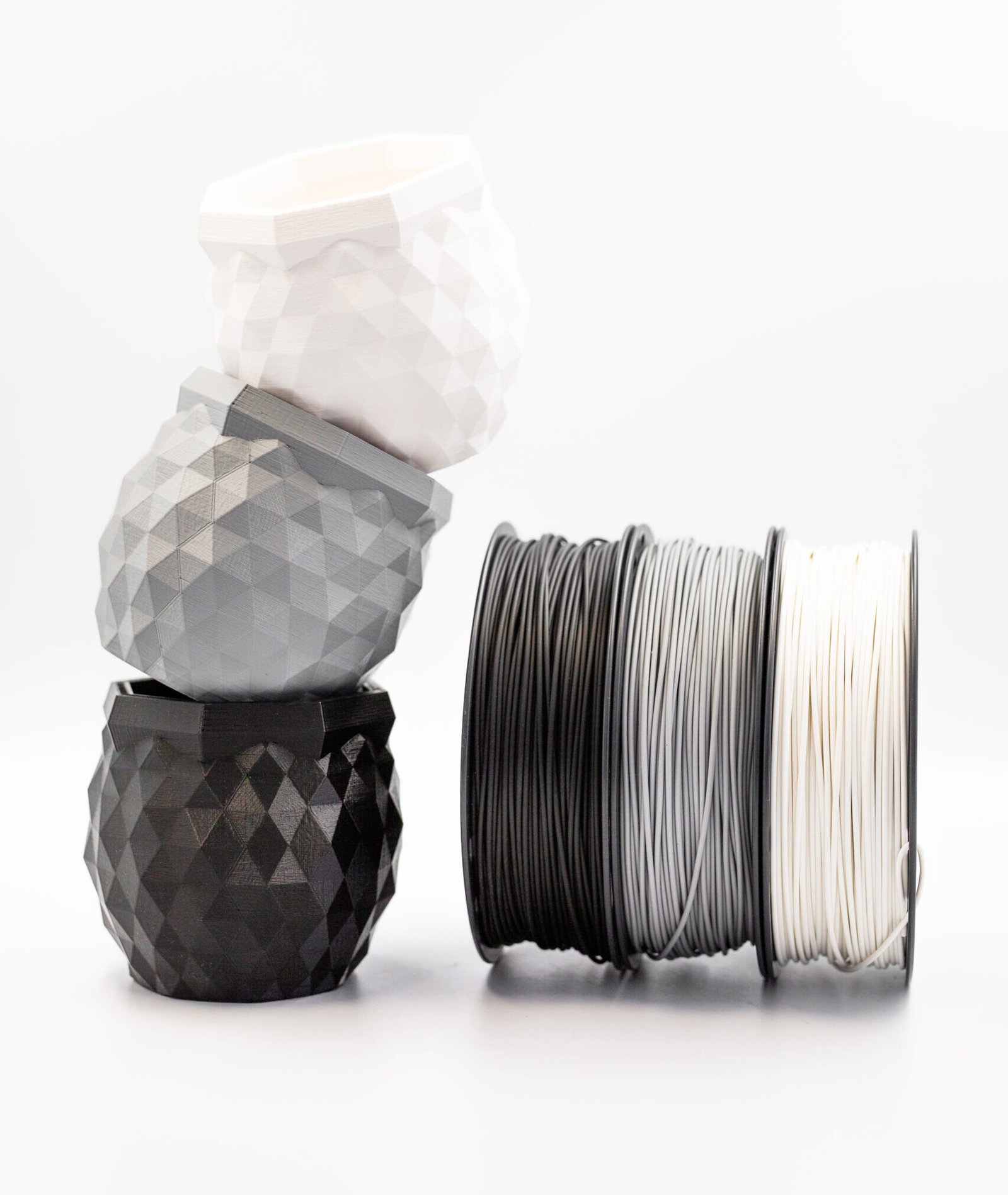When choosing filament for your next 3D print, you probably think first about material type — PLA, PETG, ABS — and then about color. But what if the color you choose does more than just affect appearance? What if the pigments in your filament actually impact print quality?
At FilaLab, we know that small details can make a big difference. In this article, we’ll explore how filament color — and the pigments used to create it — can influence the performance, finish, and consistency of your 3D prints. Whether you’re a beginner or an advanced maker, understanding this connection can help you make more informed decisions when selecting filaments.
What Is Filament Pigmentation?
Pigmentation is the process of adding colorants to the base polymer during filament manufacturing. These colorants can be organic or inorganic compounds, and they’re typically added in small concentrations. However, even in small amounts, pigments can significantly alter how a filament behaves during printing.
For example, a clear PLA filament has minimal additives and tends to behave differently under heat compared to a highly pigmented black or red PLA. The pigment itself doesn’t just change color — it can change how the filament absorbs and retains heat, how it flows through the nozzle, and even how it bonds between layers.
Do Pigments Actually Affect Print Quality?
In short: yes. Pigments can influence several factors that contribute to print quality. Here are the main areas where differences might show up:
- Layer Adhesion: Some pigments act as insulators, slightly changing how heat moves through the filament. This can affect how well layers bond to each other, especially when printing at high speeds or with minimal cooling.
- Surface Finish: Heavily pigmented or matte colors (like dark grey or deep blue) tend to result in smoother, more consistent finishes. Lighter or semi-transparent filaments might expose imperfections or require fine-tuning for the best surface quality.
- Dimensional Accuracy: Pigment density can cause slight expansion or contraction during cooling. In highly detailed or technical parts, this may result in minor differences in tolerance compared to the same part printed in a natural color.
- Nozzle Behavior: Some pigments, particularly metallic or glow-in-the-dark variants, may be abrasive or behave differently inside the hotend, potentially affecting flow consistency or even long-term nozzle wear.
Color vs. Performance: Material Type Matters Too
It’s important to remember that how pigments interact with print performance also depends on the base material. Let’s look at a few examples:
- PLA: Known for its ease of use, PLA tends to behave well across most colors. However, darker pigments (like black or navy blue) often absorb heat more efficiently, requiring slightly lower print temperatures to avoid oozing or stringing. Lighter or translucent PLAs, meanwhile, may cool faster and be more prone to layer separation on tall or thin parts.
- PETG: Color plays a more visible role in PETG, especially in transparent variants. Clear PETG is often trickier to print cleanly due to its tendency to show internal flaws. Opaque colors generally offer better consistency but may require temperature adjustments.
- ABS: ABS is already prone to warping and shrinkage, and pigmentation can amplify this. Black ABS, for instance, may retain more heat and reduce warping slightly. However, colors like red or white can behave unpredictably due to different pigment properties.
Real-World Observations and Test Results
In controlled tests, users have reported noticeable differences in print quality between colors from the same brand. For example:
- Black PLA often prints cleaner and with better layer adhesion than white PLA at the same settings.
- Red filament tends to be more sensitive to temperature shifts and may cause slight warping if not cooled properly.
- Glow-in-the-dark filaments usually require hardened nozzles and higher temperatures, as the phosphorescent particles behave differently than standard pigments.
The bottom line: two spools of the same filament type in different colors might need different slicer settings to achieve optimal results.
Choosing the Right Color for Your Next Print
When deciding on a filament color, consider more than just the look. Ask yourself:
- Is this a functional or decorative piece?
- Will the finish matter more than print strength?
- Do I need precision or just visual impact?
For prototypes or technical parts, stick to neutral colors like grey or black for more consistent results. For presentation models or artistic prints, explore bolder or translucent options — just be ready to dial in your settings.
At FilaLab, our filaments are carefully manufactured to minimize pigment-related inconsistencies, giving you top-tier performance across every shade. Still, every printer is different — and a bit of testing can go a long way.
Final Thoughts: Should Color Influence Your Filament Choice?
While color might seem like just a visual detail, it can absolutely affect how your prints turn out. Pigments alter the way a filament reacts to heat, cooling, and flow, and this can impact everything from surface quality to strength and dimensional precision.
The key is awareness. Test different colors on smaller prints, adjust your slicer settings accordingly, and don’t assume all filaments behave the same just because they’re from the same brand.
Need help choosing the right color for your next project? Check out our curated collection at FilaLab.Shop — where performance meets precision, no matter the shade.

